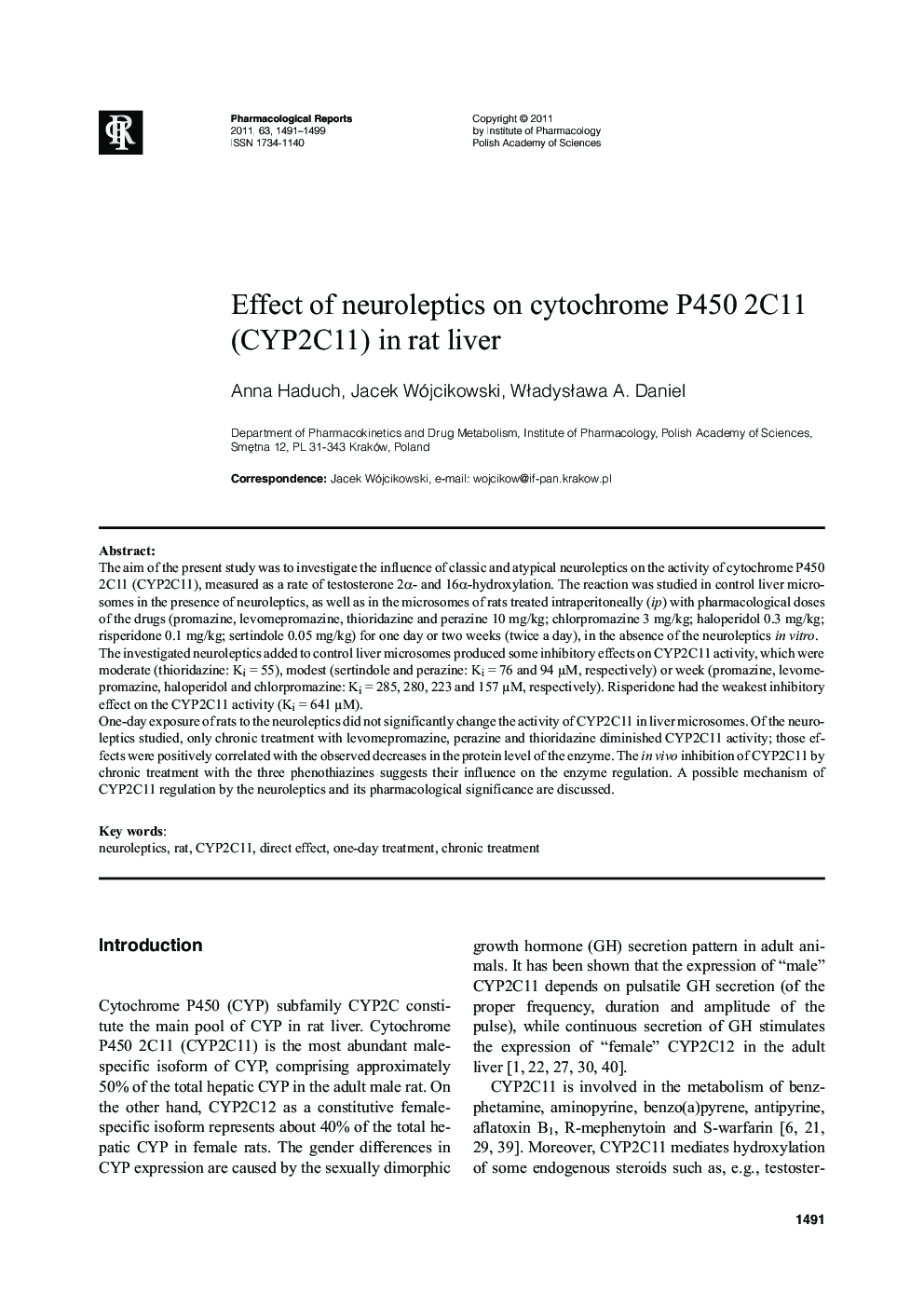| Article ID | Journal | Published Year | Pages | File Type |
|---|---|---|---|---|
| 2011856 | Pharmacological Reports | 2011 | 9 Pages |
The aim of the present study was to investigate the influence of classic and atypical neuroleptics on the activity of cytochrome P450 2C11 (CYP2C11), measured as a rate of testosterone 2α- and 16α-hydroxylation. The reaction was studied in control liver micro-somes in the presence of neuroleptics, as well as in the microsomes of rats treated intraperitoneally (ip) with pharmacological doses of the drugs (promazine, levomepromazine, thioridazine and perazine 10 mg/kg; chlorpromazine 3 mg/kg; haloperidol 0.3 mg/kg; risperidone 0.1 mg/kg; sertindole 0.05 mg/kg) for one day or two weeks (twice a day), in the absence of the neuroleptics in vitro. The investigated neuroleptics added to control liver microsomes produced some inhibitory effects on CYP2C11 activity, which were moderate (thioridazine: Ki = 55), modest (sertindole and perazine: Ki = 76 and 94 µM, respectively) or week (promazine, levomepromazine, haloperidol and chlorpromazine: Ki = 285, 280, 223 and 157 µM, respectively). Risperidone had the weakest inhibitory effect on the CYP2C11 activity (Ki = 641 µM).One-day exposure of rats to the neuroleptics did not significantly change the activity of CYP2C11 in liver microsomes. Of the neuroleptics studied, only chronic treatment with levomepromazine, perazine and thioridazine diminished CYP2C11 activity; those effects were positively correlated with the observed decreases in the protein level of the enzyme. The in vivo inhibition of CYP2C11 by chronic treatment with the three phenothiazines suggests their influence on the enzyme regulation. A possible mechanism of CYP2C11 regulation by the neuroleptics and its pharmacological significance are discussed.
